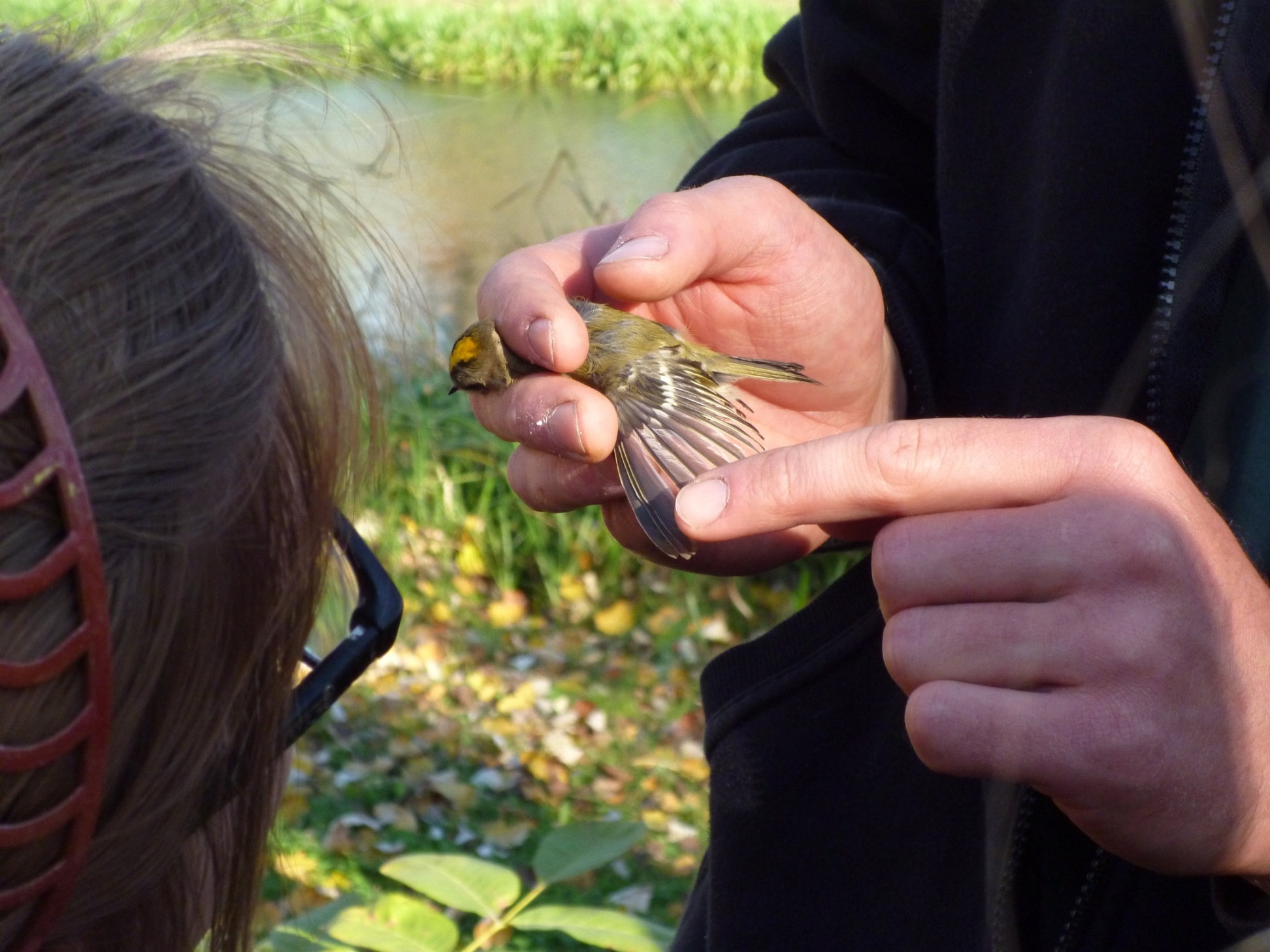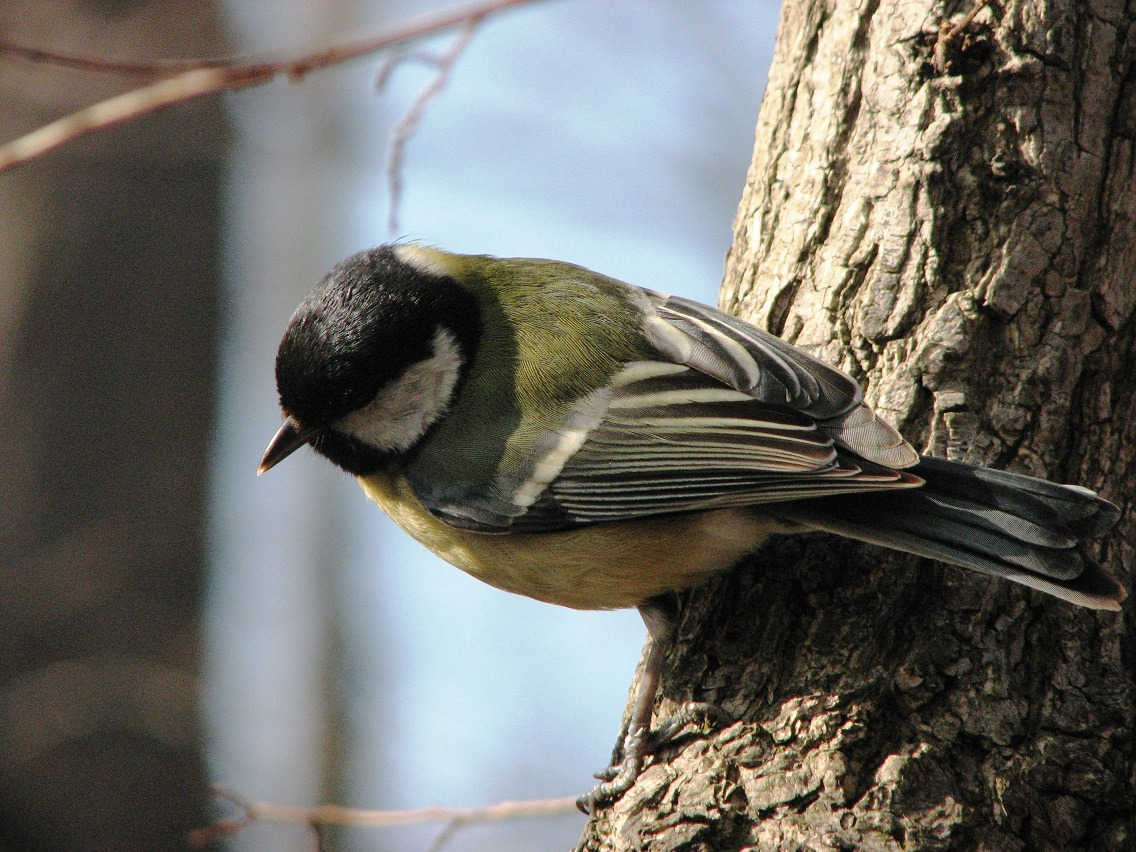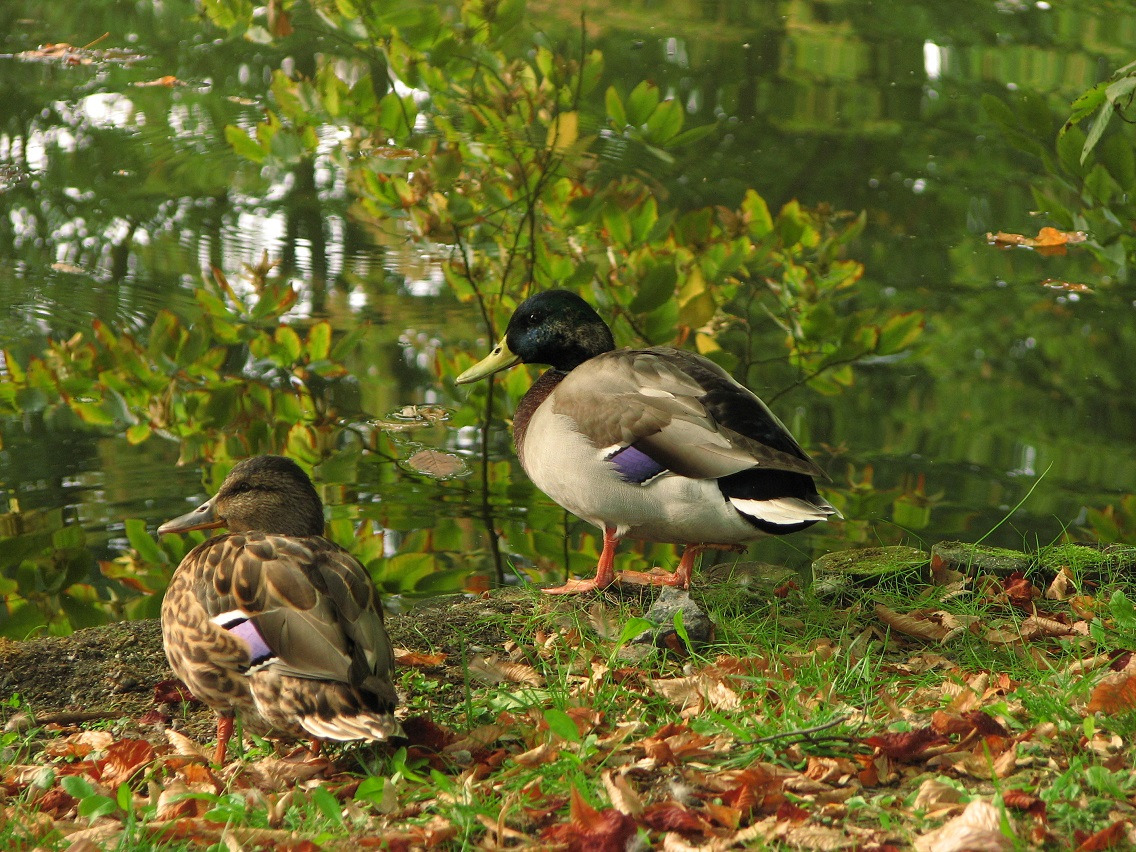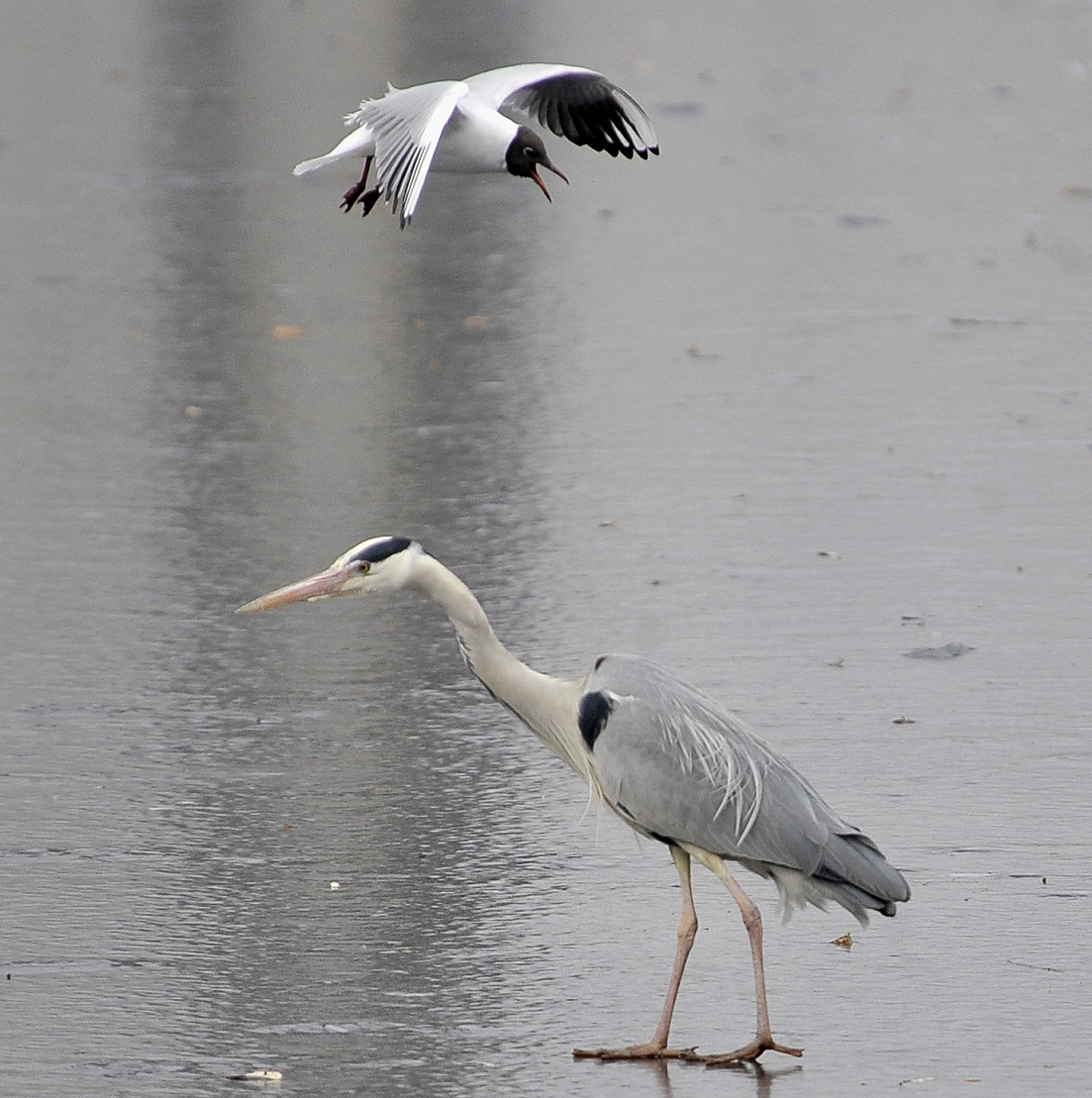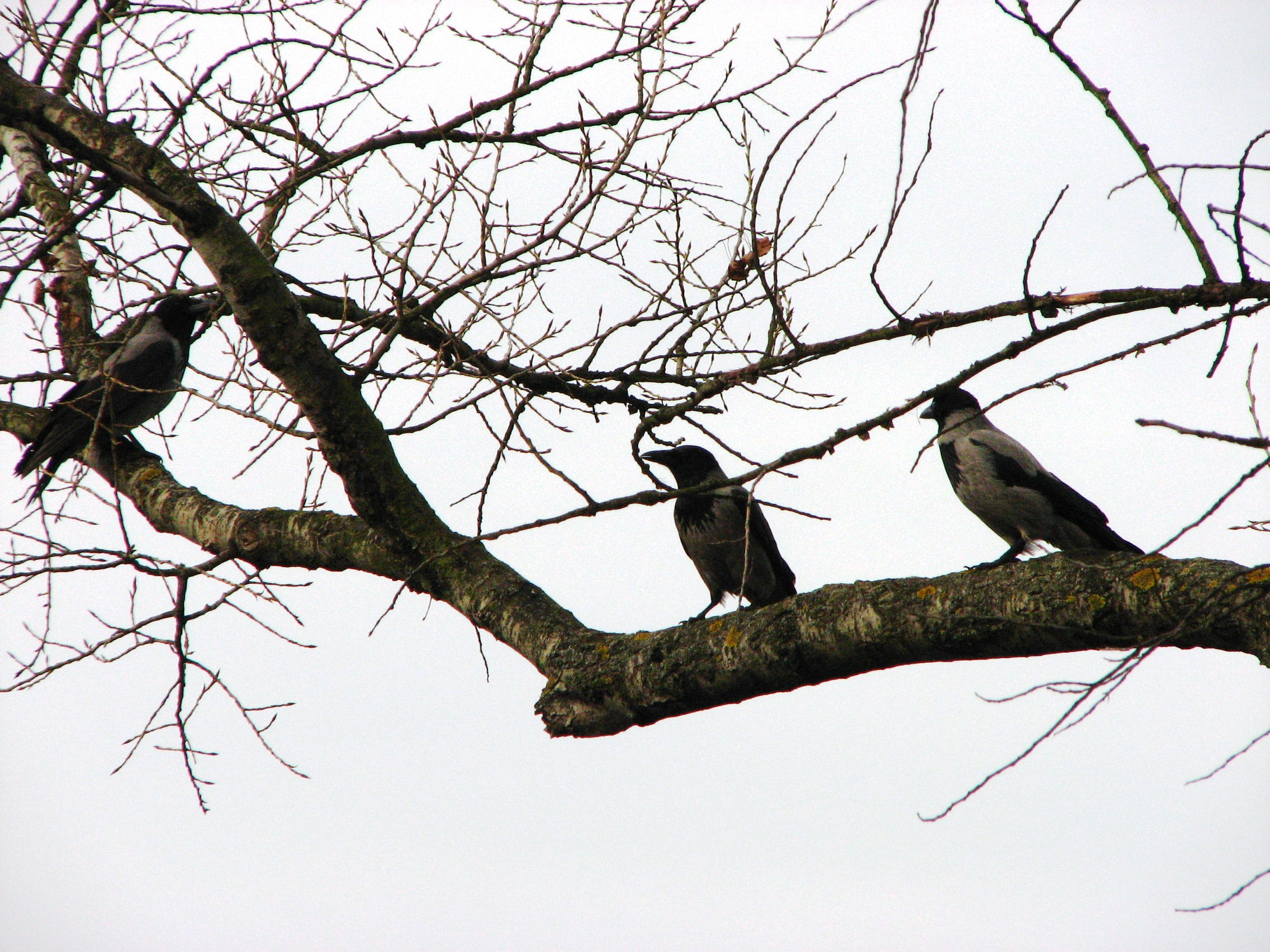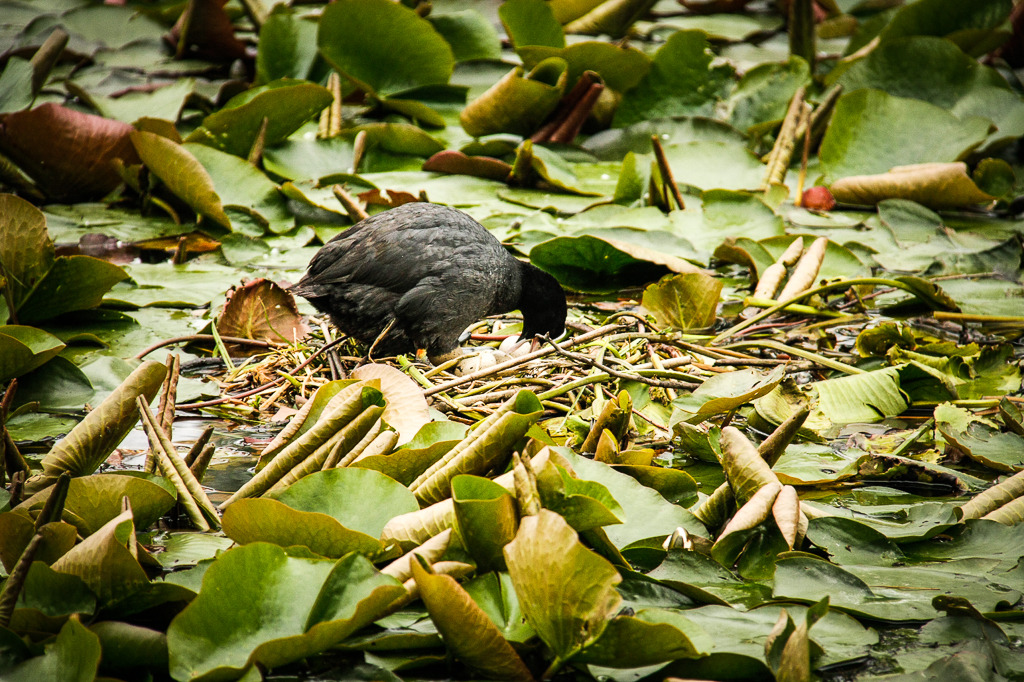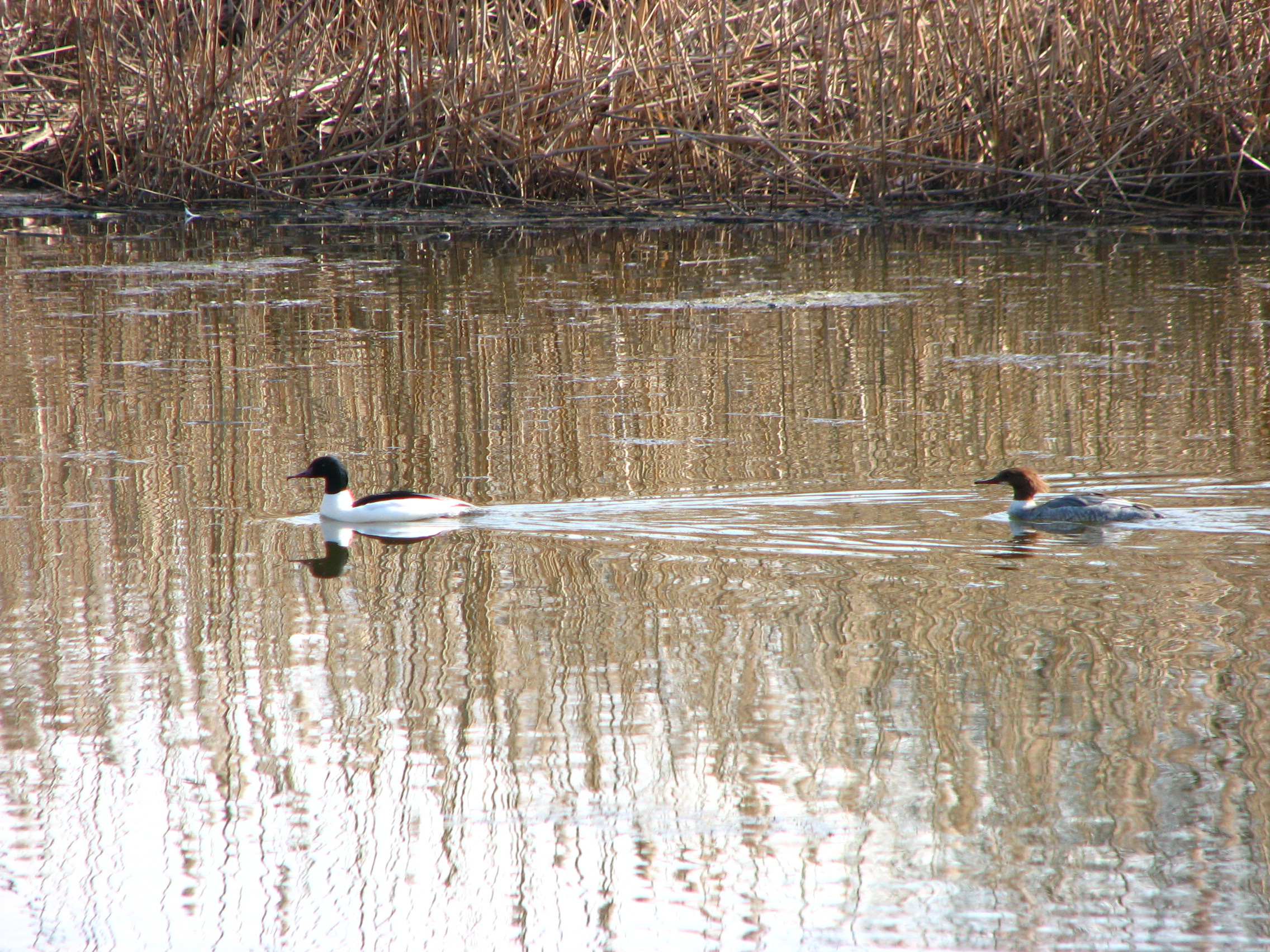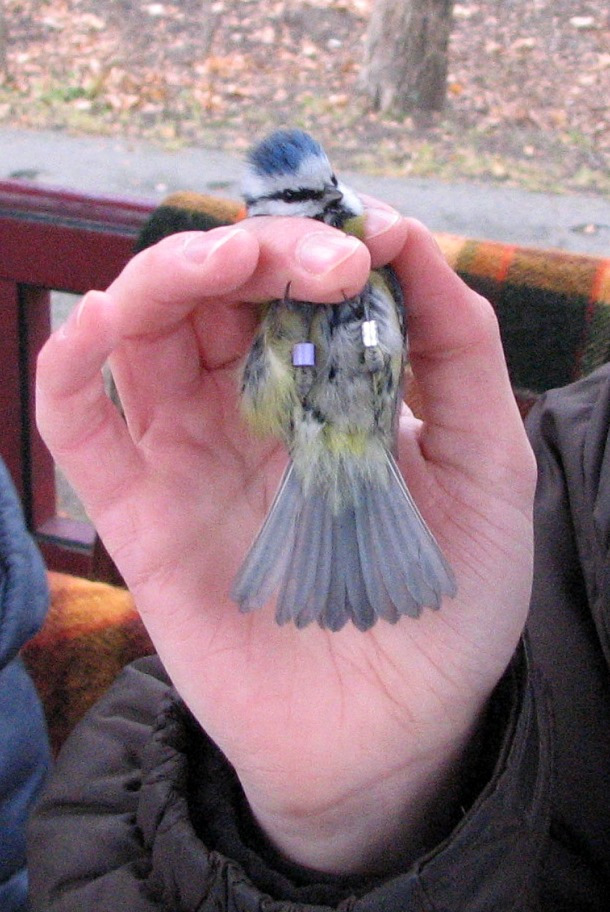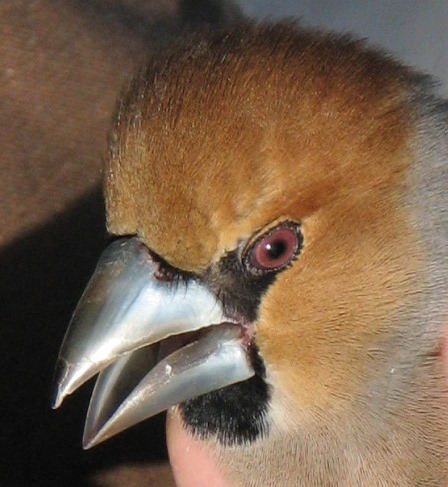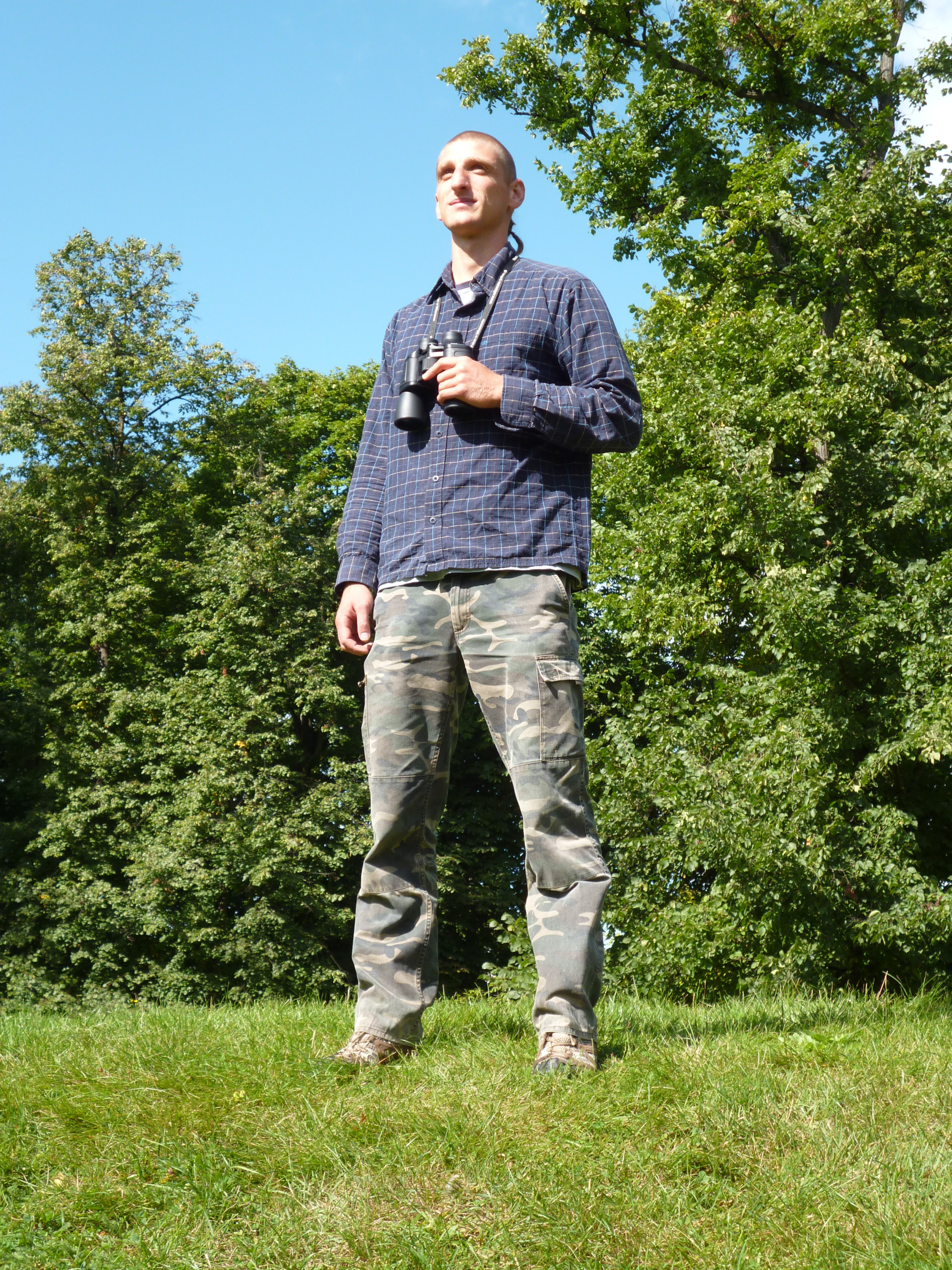Birds – monitoring and valorization of avifauna (research results)
Birds – monitoring and valorization of avifauna (research results)
Research work as part of the project “Social education in the conflict between urbanisation and ecology at the Wilanów Palace Museum” included monitoring and valorization of avifauna, i.e. all birds inhabiting the gardens and parks of the Museum of King Jan III’s Palace at Wilanów.
In March 2016, a final report was submitted summarising the work carried out in the period from August 2014 to February 2016. As part of the research, the area between Lake Wilanowskie and the palace as well as the area above the escarpment and the foreland were inspected. During the project, research was carried out using various methods: the transect method (counting birds in sections), counting water birds in reservoirs, random counting of birds throughout the park, ringing, control of the population of nesting boxes, control using the cartographic method (assessment of the number of breeding pairs and marking their territories).
What was observed
A total of 91 bird species were recorded throughout the research period. The average density of birds at that time was 7.05 individuals per 100 m. The lowest numbers were obtained from March to July, i.e. during the bird breeding season. At that time, the lowest variability was observed between inspections, which clearly shows that during this period the birds are not very mobile and during subsequent inspections we often deal with the same individuals. Low variability persisted until September 2015, i.e. until the intensive flight of tits. However, a similar relationship was not found in 2014, when high variability between months persisted from August 2014 until March 2015. A total of 52 bird species were found in all the studied transects (only stationary individuals, excluding wetland birds), from 34 to 43 in a single transect. Two species belonged to the eudominant class (over 10% of the population of the entire group) – the great tit and the blue tit, four – to the dominant class (5–10% of the number) – nuthatch, jackdaw, rook, starling, three – to the subdominant class (2–5% of the number) - grey crow, finch, blackbird, and 43 to the class of repeaters.
During the work, breeding sites of 37 species of birds belonging to eight orders were found. The total size of the breeding population was 254–261 pairs. Additionally, in the immediate vicinity of the park, breeding nests of the songbird were found (a pair nested on an island in the northern part of the park which, due to the fact that it is located within the Morysin reserve, was not included in the research), a swan and a merganser.
The most numerous group of birds were cavity nesters (birds nesting in tree holes, nesting boxes, etc.), constituting half of the analysed group of breeding birds (16 species). The least numerous were birds nesting on the ground (7 species); slightly more numerous were species nesting in trees above 1.5 m in height (9 species).
A total of 25 species of wetland birds were recorded. The most numerous water birds were represented by the mallard, followed by the mute swan, coot and merganser.
The largest number of species was found in the main basin of Lake Wilanowskie, which is related to the largest surface area of this reservoir, which allows numerous seagulls, mergansers and cormorants to remain there.
The species found all year round, regardless of weather conditions, was the mallard. The number in a single inspection ranged from 38 individuals at the beginning of the breeding season to 173 in the second half of June. On average, the largest number of ducks were observed in June and July; in the remaining period the number was variable, but the monthly average was between 80 and 120 individuals. The strongest differences between subsequent inspections were found in September–October, i.e. the duck migration period, and in January–February, when the number is most dependent on weather conditions and the icing of reservoirs.
In the years 2014–2016, 300 birds were ringed during winter catching of birds at the feeder and in a single capture in October 2014. Additionally, a total of 33 chicks were ringed: blue tits (2 families) and great tits (3 families). 1 mute swan and 5 mallards were also ringed.
Partial research results
In January 2016, 26 species of birds were found, which is less than in December 2015 and as many as 10 less than in January 2015. There were much fewer water birds in the park than a year earlier, including seagulls As a result of the freezing of water reservoirs, most of the wetland birds left the park, and only the mallards, swans and herons remained. A teal arrived in the park for a short time. Probably due to warming, there was a significant increase in the number of passerine birds (any bird of the order Passeriformes) observed during counting in sections (transects), especially during the inspection on 15 January.
In February 2016, 35 species of birds were recorded, which is more than a month ago and more than in the same period last year. There were many more waterbirds in the park than in January, and the number of mallards again exceeded 100 individuals during a single inspection. Water birds have already started their spring migration, which in the Wilanów park is manifested by an increased presence of mergansers, the appearance of cormorants and other species of ducks (in 2016, these were teal). As the reservoirs thawed, the coot also returned to the park. The most interesting observation in February was the sighting of singing starlings in the southern part of the park.
In December 2015, 31 bird species were recorded, slightly more than in November. As a result of the freezing of water reservoirs, most of the wetland birds left the park, only the mallards remained. Passerine birds were observed in small numbers, but most often feeding in flocks. Birds often clustered around feeders, outside the transect route (research sections). Corvids were an important element of the avifauna. An interesting species composition of woodpeckers was again observed, as well as wintering wrens and blackbirds, which will probably try to survive the winter in the park. As is typical for the winter season, birds were found very irregularly on transects. During the ringing, a 5-year-old blue tit, quite old for small birds, was found.
In November 2015, only 27 species of birds were recorded, 8 less than in October and 7 less than in November 2014. The differences may be due to quite poor weather conditions which, among other things, resulted in lower activity of, for example, woodpeckers. There were numerous corvids recorded in November. The diversity of wetland birds has decreased significantly, including seagulls.
In October 2015, 35 bird species were recorded, i.e. 5 less than a month earlier. A typical autumn accent was the appearance of thrushes and the absence of sylviid warblers and leaf warblers. Still quite numerous fieldfares and, above all, an increased percentage of corvids (crow, jackdaw, rook) seem to be a sign of autumn and the coming winter for the Wilanów gardens.
In September 2015, 40 bird species were recorded (5 species more than in August). It was found, among others: sylviid warblers, migrating jays and goldcrests. The largest so far flock of crows, numbering 28 individuals, was observed in the trees around the main basin of Lake Wilanowskie. Quite intensive migration of sparrows was observed, which is reflected in the results of transect counts (counting in sections) – higher densities and higher species richness.
In August 2015, 35 bird species were recorded. Despite lower species diversity, higher numbers were recorded during transect surveys. The increase in numbers is related to the presence of a fraction of migratory birds (e.g. flocks of tits). The smaller number of mallards recorded in the park is probably a consequence of the movement of some males that have already finished moulting to other places outside the park.
In July 2015, a total of 40 species of breeding and non-breeding birds were recorded. In July, families of birds (adults accompanying young ones) were observed: great tits and blue tits, a white-throated woodpecker, a grey flycatcher, a redstart and a finch. Bird densities determined during counts on transects (permanent sections designated in the field where birds are counted twice a month) were lower than in June, which is related to the fact that individuals of many species that have stopped breeding have left the park.
In June 2015, a total of 45 species of breeding and non-breeding birds were recorded. Nesting of goldfinches and warblers observed during the inspection in May has not been confirmed. In June, further attempts at breeding by tits and the first breeding of a grey flycatcher were observed. In several places, songbirds were observed singing and feeding young woodpeckers: green, large and white-throated. Bird densities on transects were similar to those obtained in May, but much more variable between controls.
In May 2015, a total of 44 bird species were recorded. In mid-May, starlings began to intensively feed their young, and many of them inhabited nesting boxes and natural tree holes. A little later, tits (the great tit and the blue tit) also started feeding, while the pied flycatcher, for example, was just incubating its eggs. Already in May, families of mallards appeared in increasing numbers, most of which were probably nesting in tree holes in the park and in the immediate vicinity. Two coots built nests in clumps of aquatic vegetation, and a pair of little bitterns approached the nests in the reeds north of the Roman Bridge. The density of birds obtained during counting on transects (designated sections) was slightly lower than in April, but importantly, a significant increase in species richness was noted.
In April 2015, a total of 40 species of birds were found in the park as breeding species or using the environmental resources offered by the Wilanów gardens. New species appeared, not previously recorded in these studies: including: the bittern, redstart, wood warbler, primrose and songbird. A coot with a number collar returned to the park after spending part of the winter in Lesser Poland and Silesia. Bird densities obtained during transect counts (counting birds in designated sections) once again turned out to be lower than in previous months, which is related to the bird breeding season and the fact that birds do not gather in flocks. Additionally, some individuals are just incubating, so their presence cannot be detected during this type of observation.
In March 2015, 31 bird species were recorded. The new species detected during the research was the teal. As usual, as many as 4 species of woodpeckers were found. After the winter break, coots and mergansers appeared in larger numbers, their numerous presence in the main basin of Lake Wilanowskie being associated with the migration period of these birds. The densities obtained during transect work were lower than during autumn migration or wintering.
In February 2015, inspections were carried out using five methods: the transect method, counting water birds in reservoirs, random counting of birds throughout the park, bird ringing and a cartographic inspection, the results of which will be presented after the end of the bird breeding season. Additionally, an inspection of the colonisation of nest boxes was carried out. A total of 28 bird species were recorded in February. This value is very similar to that obtained in December 2014, and lower than in January 2015. The values obtained on transects were the closest to each other among those obtained so far in the previous months. Due to the long-term freezing of most reservoirs, water birds gathered on the Służewiecki Stream or the frozen part of the main basin of Lake Wilanowskie.
In January 2015, a total of 36 species of birds belonging to 8 orders were recorded, which is 8 more than in December. The increase mainly concerned species associated with water reservoirs, i.e. anseriformes (waterfowl) and charadriiformes (shorebirds). Bird densities obtained during transect counts were comparable. The presence of a jackdaw and a rook turned out to be important for the results obtained in transect number 4 (the foreground of the museum), which most often use the lawns in the foreground and partly the lawns in the southern part of the park (near transect number 3, but not included in the results).
During the December inspections (2014), an increase in the dominance of the great tit and a relative decrease in the presence of the recorded blue tits were observed. However, there was an increase in the number of species associated with the winter period, i.e. the bullfinch and the common redfinch. Three species of woodpeckers were found, which is a slight decrease compared to November. The most interesting observation is the male blackcap. The little hooded warbler is the only species of warbler that regularly winters in central and western Europe, but wintering in Poland is not frequent and observations from December to February are rare. In total, 28 species of birds belonging to 5 orders were recorded in December. Compared to previous months, the species richness found during counts on transects and in water reservoirs has decreased. Strong ice cover had a clear impact on the wetland avifauna (except for the Służewiecki Stream), which resulted in a larger number of birds in this stream. During transect counts, an uneven distribution of birds, typical for winter, was observed. In December, a family of swans was once again observed, with a male marked with a plastic alphanumeric ring. Another family was also spotted, this time with one cygnet, in the southern part of the main basin of Lake Wilanowskie. During the counting, the presence of a blue tit marked with a metal ring and a purple plastic ring was also found. This type of marking was carried out in the park during winter bird ringing until 2012. You can read more about the colourful marking of birds in the Wilanów park >>HERE.
In November 2014, 34 species of birds belonging to 7 orders were recorded. Similarly to October, the species richness of wetland avifauna decreased. The new species observed in the park were the gadwall and a hybrid of the greater and white-throated woodpecker. There was a noticeable greater presence of corvids and species associated with the late autumn and winter period (goldcrest, hawfinch, bullfinch). During both inspections, a family of mute swans was observed (2 adults, 6 young). One of the adult birds had a metal and colourful foot ring. This bird was ringed in 2010 on Lake Powsinkowskie as a male after 3 calendar years of age. Even then, it was a breeding bird in the area. All readings of this bird come from Lake Wilanowskie or Powsinkowskie (37 readings in total).
In October 2014, 37 species of birds belonging to 8 orders were found. The species richness of wetland avifauna has decreased compared to previous months. Moreover, birds’ preferences in choosing different water reservoirs or parts thereof have changed. There was a noticeable greater presence of corvids and species associated with the late autumn and winter period (the common mouse, the hawfinch).
In September 2014, 41 species of birds belonging to 11 orders were recorded. There was still a rather interesting composition of wetland avifauna. Noteworthy is each observation of grebes and a single observation of 4 young mergansers on the Służewiecki Stream. The number of grey herons decreased significantly compared to the August inspections. Several exclusively migratory species were also recorded, including: a high-feeding swift and a skylark.
File list
In August 2014, 40 species of birds belonging to 8 orders were found. Particularly noteworthy is the presence of as many as 4 species of woodpeckers and an interesting, diverse composition of wetland avifauna. However, coots, moorhens, water warblers and grebes only stick to the northern part of the reservoir, possibly entering the side branch of the lake. Among the passerines, an interesting and permanent element in August are two species of flycatchers - pied and grey, and a full set of common warbler, including the wood warbler.
The bird research was conducted by Marek Elas, who introduces himself as follows: “I am an ornithologist by education and passion. I graduated from the Faculty of Forestry of the Warsaw University of Life Sciences (SGGW). My main area of interest is the birds of the Vistula Valley, but I conduct research in various habitats: water, field and forest. In my activities, I try not to neglect the educational aspect.
→ You can learn more about the research conducted as part of the project >>HERE.
→ We invite you to watch a mini-report on cleaning the nesting boxes: >>HERE.
→ Marek Elas talks about sneaking into the intimate life of birds. Read the interview >>HERE.
